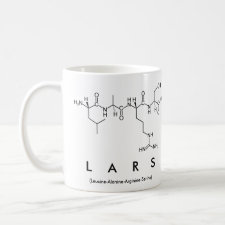
Authors: Andersson LI
Article Title: Molecular imprinting: developments and applications in the analytical chemistry field.
Publication date: 2000
Journal: Journal of Chromatography B-Analytical Technologies in the Biomedical and Life Sciences
Volume: 745
Issue: (1)
Page numbers: 3-13.
DOI: 10.1016/S0378-4347(00)00135-3
Abstract: In analytical separation science, molecularly imprinted polymers have been applied in several analytical techniques, such as liquid chromatography, capillary electrochromatography and capillary electrophoresis, solid phase extraction, immunoassay, and as a selective sorbent in chemical sensors. A benefit of imprinted polymers is the possibility to prepare sorbents with selectivity pre-determined for a particular substance, or group of structural analogues. The application most close to a wider acceptance is probably that of solid phase extraction for clean-up of environmental and biological samples. The improved selectivity of imprinted polymers compared with conventional sorbents may lead to cleaner chromatographic traces in the subsequent analytical separation. Furthermore, the solid phase extraction application does not suffer from drawbacks generally associated with imprinted polymers in chromatography, such as peak broadening and tailing. Most liquid chromatographic studies have focused on using imprinted polymers as chiral stationary phases for enantiomer separations. Also, the use of imprinted polymers as selective sorbents in capillary electrochromatography has been presented. For this purpose, a protocol to prepare superporous, monolithic imprinted polymer-based capillary columns has been developed. Due to the high affinities and selectivities often achievable, imprinted polymers have been considered as alternative binding entities in biosensors and in immunoassay type protocols. Here, high stability, easy preparation and ability to be used for assay of both aqueous and organic solvent based samples are advantages of the polymers. (C) 2000 Elsevier Science B.V. All rights reserved



Join the Society for Molecular Imprinting

New items RSS feed
Sign-up for e-mail updates:
Choose between receiving an occasional newsletter or more frequent e-mail alerts.
Click here to go to the sign-up page.
Is your name elemental or peptidic? Enter your name and find out by clicking either of the buttons below!
Other products you may like:
 MIPdatabase
MIPdatabase









